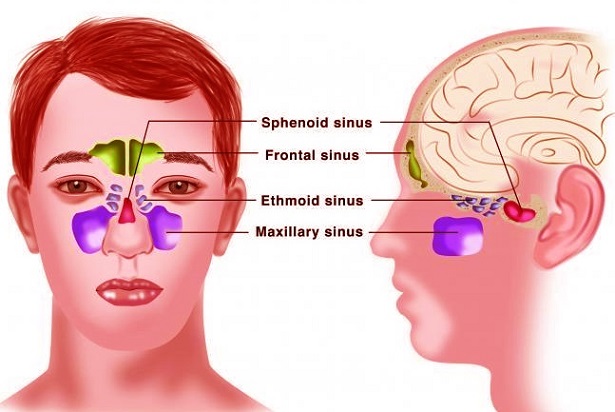Nikhil Prasad Fact checked by:Thailand Medical News Team Jan 06, 2025 3 months, 1 week, 1 day, 13 minutes ago
Medical News: Chronic rhinosinusitis (CRS) is a condition affecting millions globally, marked by persistent inflammation in the sinus and nasal passages. Symptoms such as nasal congestion, loss of smell, and a thick nasal discharge can significantly impact quality of life. While the condition has long been understood in terms of immune and epithelial cells, new research sheds light on the pivotal role of fibroblasts, which are cells integral to maintaining the structural integrity of tissues and regulating inflammation. Researchers from Gunma University Graduate School of Medicine in Japan and its affiliated centers have made significant strides in characterizing fibroblast heterogeneity within CRS, potentially opening doors to novel therapeutic strategies.
 Emerging Insights into Fibroblast Markers in Chronic Rhinosinusitis
Unveiling Fibroblast Heterogeneity
Emerging Insights into Fibroblast Markers in Chronic Rhinosinusitis
Unveiling Fibroblast Heterogeneity
The study involved isolating fibroblasts from nasal polyp tissues of patients with CRS with nasal polyps (CRSwNP), a subset of CRS that often presents more severe symptoms. By employing RNA sequencing and advanced computational analyses, researchers identified two distinct fibroblast subtypes - ADGRB3-high and POSTN-high fibroblasts - each associated with specific inflammatory and cellular pathways.
This
Medical News report highlights key findings that differentiate these subtypes and their implications in CRS pathology. ADGRB3-high fibroblasts were linked to type 1 inflammation and cytotoxic immune responses, whereas POSTN-high fibroblasts were associated with type 2 inflammation and tissue remodeling. These findings were further validated through data from public genomic repositories, making the conclusions robust and well-supported.
Methodology Overview
Nasal polyp tissues were collected from eight patients undergoing sinus surgery. Researchers used advanced RNA sequencing to capture a detailed expression profile of genes within these fibroblasts. Key markers - ADGRB3 and POSTN - helped define the subtypes. ADGRB3 expression was elevated in fibroblasts stimulated with interferon-gamma (IFN-γ), a type 1 inflammation cytokine, while POSTN expression increased in response to interleukin-4 (IL-4) and interleukin-13 (IL-13), both hallmark cytokines of type 2 inflammation. These in vitro stimulations provided compelling evidence for the link between inflammation types and fibroblast phenotypes.
ADGRB3-High Fibroblasts: Guardians of Cytotoxic Response
ADGRB3-high fibroblasts emerged as crucial players in type 1 inflammation. Type 1 inflammation is often characterized by the activation of cytotoxic T cells and natural killer cells, which are essential in combating intracellular pathogens. The hallmark gene sets enriched in ADGRB3-high fibroblasts included pathways related to tumor necrosis factor (TNF) signaling and interferon responses. These fibroblasts likely contribute to the structural stability of nasal mucosa through their role in cell adhesion and interaction with immune cells.
Interestingly, while these fibroblasts were present in both eosinophilic CRS (
ECRS) and non-ECRS patients, their gene expression profile suggests a more pronounced role in cytotoxic immune regulation. Researchers propose that ADGRB3-high fibroblasts may facilitate a robust local immune defense in the nasal tissues of CRS patients.
POSTN-High Fibroblasts: Agents of Tissue Remodeling
POSTN-high fibroblasts, on the other hand, were strongly associated with type 2 inflammation, a pathway typically involved in allergic responses and chronic inflammation. This subtype was exclusively observed in patients with ECRS, characterized by high levels of eosinophilic inflammation. Gene enrichment analyses revealed pathways associated with the cell cycle and proliferation, highlighting the fibroblast’s role in tissue remodeling and repair.
Periostin, encoded by the POSTN gene, is an extracellular matrix protein previously implicated in various airway diseases, including asthma and allergic rhinitis. Elevated POSTN expression in fibroblasts aligns with its known role in promoting fibrosis and tissue remodeling. The study’s findings suggest that POSTN-high fibroblasts might drive the formation and persistence of nasal polyps by enhancing fibrotic processes in CRS patients.
A Comparative Insight into Tissue Samples
The researchers further analyzed tissue samples from a publicly available dataset to validate their findings. Clustering these samples based on ADGRB3 and POSTN expression mirrored the fibroblast subtypes observed in isolated cells. ADGRB3-high tissues predominantly showed type 1 and type 3 inflammation markers, whereas POSTN-high tissues exhibited elevated type 2 inflammation markers. The presence of M2 macrophages, which are known for their role in resolving inflammation and promoting tissue repair, was notably higher in POSTN-high tissues, reinforcing the subtype’s link to fibrosis and chronic inflammation.
Implications for Treatment
These findings provide critical insights into the molecular underpinnings of CRS and highlight potential targets for therapy. For instance, targeting POSTN-high fibroblasts or the pathways they influence might help mitigate tissue remodeling and reduce the recurrence of nasal polyps. Similarly, modulating ADGRB3-related pathways could enhance cytotoxic immune responses, potentially improving outcomes for CRS patients.
Conclusion
This groundbreaking research underscores the complexity of fibroblast roles in CRS, differentiating them as either promoters of immune responses or agents of tissue remodeling. By identifying ADGRB3-high and POSTN-high fibroblasts as markers of endotypic traits, the study not only deepens our understanding of CRS pathology but also lays the groundwork for innovative therapeutic interventions.
The study findings were published in the peer-reviewed journal: Immuno.
https://www.mdpi.com/2673-5601/4/4/38
For the latest on Chronic Rhinosinusitis, keep on logging to Thailand
Medical News.
Read Also:
https://www.thailandmedical.news/news/microbes-may-fuel-nasal-tumors
https://www.thailandmedical.news/news/hpv-linked-benign-nasal-tumors
